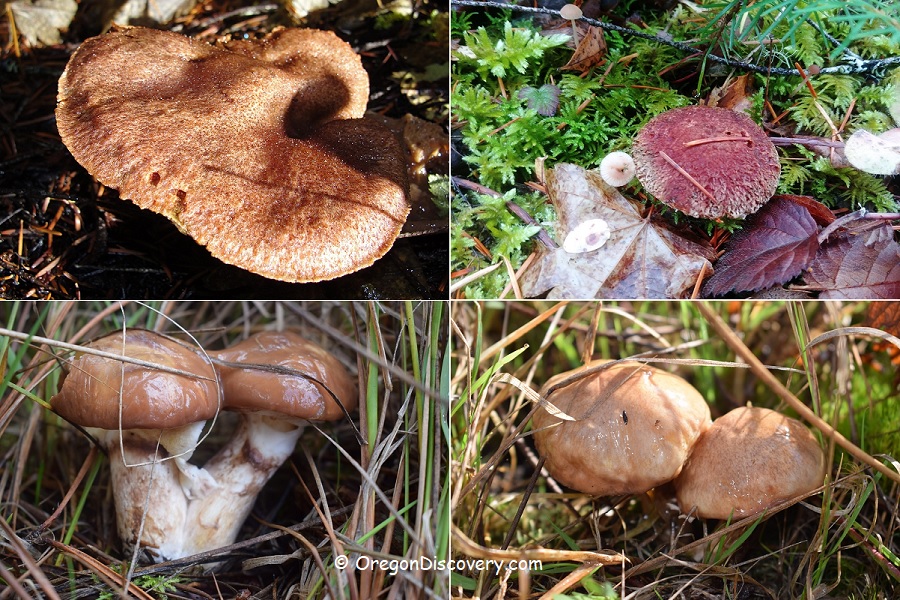
• Suillus is highly prized in Eastern Europe
• It is called Slippery Jack because the mushroom's cap is slimy and sticky when moist
The name Suillus meaning "swine" in Latin and it is used to define a genus of mushrooms. Several species of this fungi are edible when carefully cooked. Slippery Jack is often applied to a few members of Suillus. It is called "Slippery" because the mushroom's cap is slimy and sticky when moist.
Suillus genus is associated with Boletes. The species of both genera often share the same woods, growing under conifer trees. Also, they have similar features including convex brown caps and spongy yellowish-brownish pores. Like Boletes, Suillus is one of the easier mushrooms to identify.
Until the end of the last century, Suillus was a part of the Boletaceae family. However, the molecular taxonomic research conducted in South Korea identified that the Suillus fungi are separated from Boletaceae and moved them to Suillaceae family.
Currently, one hundred species of Sullius were reported worldwide and 70 in the United States. Slippery Jack and other mushrooms of the Suillus genus are widely distributed throughout the Pacific Northwest. These fungi grow on the ground under pine and spruce trees. Several species of Suillus are edible but considered as one of the low-quality fungi, but not everywhere.
Slippery Jack is highly prized in Eastern Europe. Known as "maslyata" in the Russian and "maslaki" in the Polish language that means "Butter Mushroom", they are often used in Italian, Polish, and Russian cuisines to prepare delicious meals.
However, some of them are bitter or can lead to gastrointestinal upset. Also, diarrhea can occur when the slimy skin of Slippery Jack isn't removed. Rarely, Suillus species can cause an allergic reaction.

Slippery Jack (Edible)
Slippery Jack (Suillus luteus) is a great wild edible mushroom with a slight aroma and excellent taste. Slippery Jack is good for pickling, preserving, or sautéing. They are not used for drying because of their high water content. The slimy skin should be removed before cooking to avoid gastrointestinal upset (diarrhea).


Cap: Hemispherical to flat. Sticky when moist, yellow-brown to red-brown, 2-5 inches (5-12 cm) wide.
Cap's Underside: Sponge-like, rounded small pores. Whitish to yellow pores, darkening with age, not changing color where bruised.
Spore Print: Elliptical, brown.
Stem: Thick, brown-dotted with a white veil, 1-5 inches (3-12 cm) long.
Flesh: White, becoming yellowish.
Fruiting: In groups.
Habitat: Coniferous forest and lawns, plentiful in pine forests.
Season: September - December.
Similar species are Granulated Slippery Jack (Suillus granulatis) and Short-steamed Slippery Jack (Suillus brevipes) but these species do not have veils.
Fat Jack (Edible)
Fat Jack (Suillus ponderosus), also known as Douglas-fir Suillus is a wild edible mushroom with a great flavor. The mushrooms are abundant on the West Coast and found on the ground in woods or their edges near or under Douglas-fir trees. They are good for pickling, preserving, or sautéing.
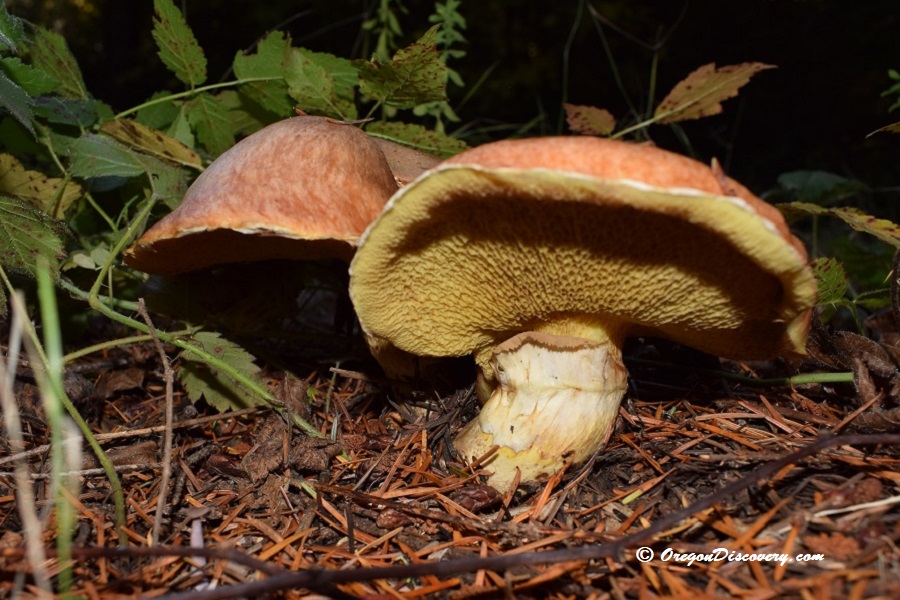
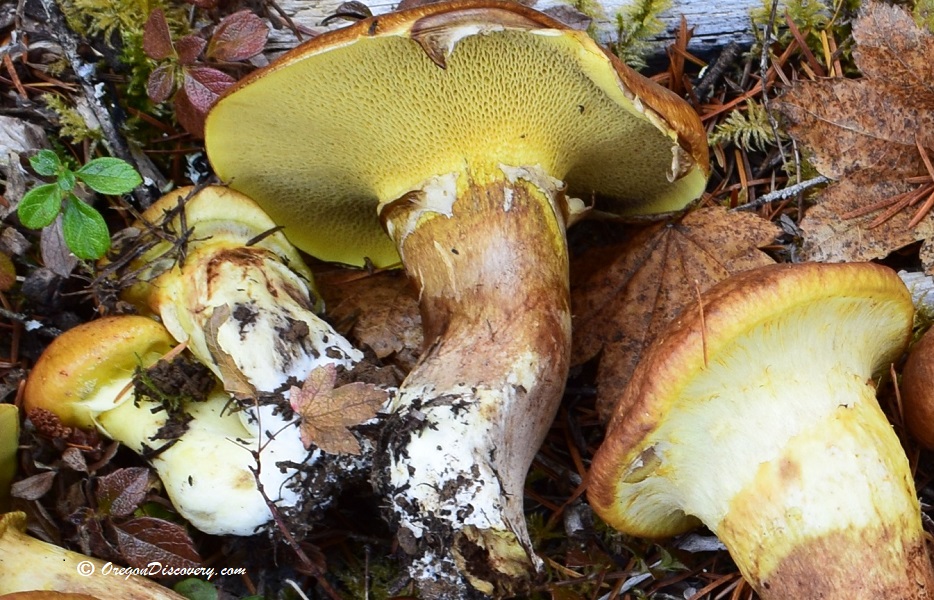
Cap: Hemispherical to flat. Sticky when moist, yellowish to brownish, 2-10 inches (5-25 cm) wide.
Cap's Underside: Sponge-like, yellowish when fresh subangular pores, darkening with age, staining brown when bruised.
Spore Print: Elliptical, brownish.
Stem: Solid with a veil or partial veil present, yellowish above annulus and orangish-brown not glandular-dotted below annulus, 1-4 inches (3-10 cm) long.
Flesh: Yellowish, staining reddish or brown when bruised.
Fruiting: In groups.
Habitat: Douglas-fir trees.
Season: September - December.
Matte Jack (Edible)
Matte Jack (Suillus lakei), also known as Western Pained Suillus or Lake's Bolete. Characterized by reddish to brownish scales or fibers, this wild edible mushroom is common on the West Coast. It is found on the ground in forests or their edges and associated with Douglas-fir. Matte Jack is good for pickling, preserving, or sautéing.
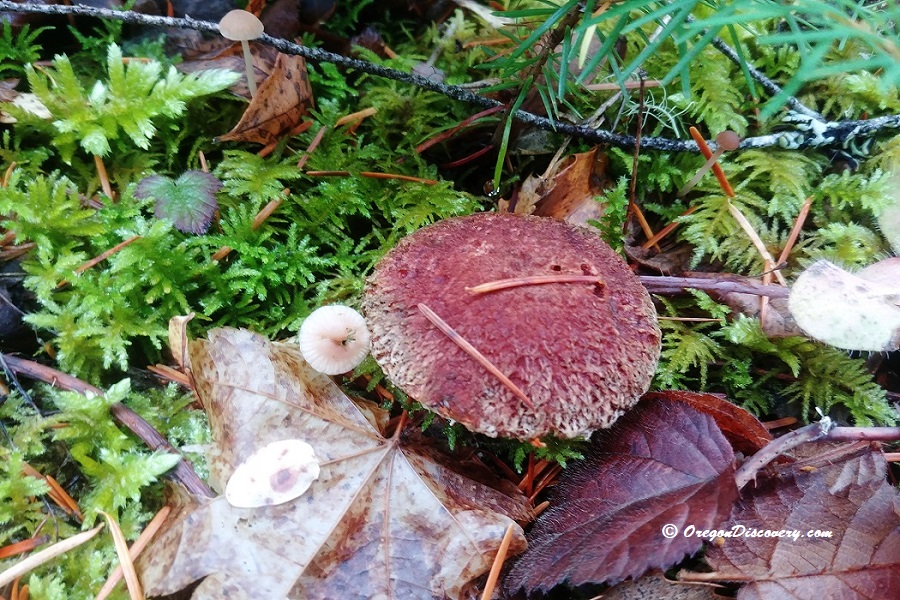
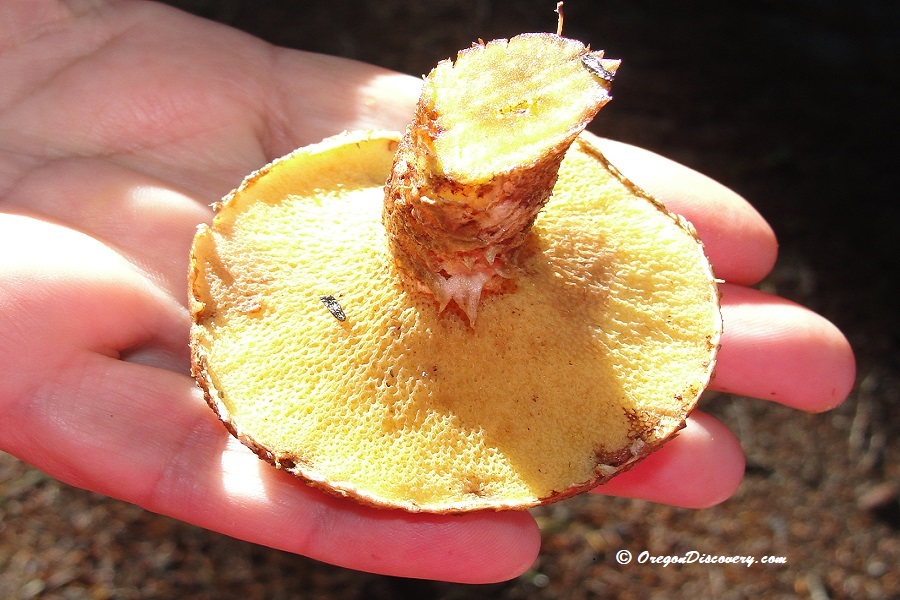
Cap: Hemispherical to flat. Dry and scaly, reddish to brownish, 2-6 inches (5-15 cm) wide.
Cap's Underside: Sponge-like, yellow to brownish.
Spore Print: Elliptical, brownish.
Stem: Solid, a veil or partial veil when young, streaked with red-brown below the ring, and yellowish above the ring, 1-3 inches (2-7 cm) long.
Flesh: Yellowish, staining blue or blue-green.
Fruiting: In groups or singly.
Habitat: Douglas-fir trees.
Season: September - December.
It's smart to purchase one or two pocket mushroom guides to cross-reference. Make sure the identification book is up to date and relevant to your area. The good choice is:
National Audubon Society Field Guide to North American Mushrooms
All That the Rain Promises and More: A Hip Pocket Guide to Western Mushrooms
Methods of Cooking
Methods of cooking: stir-frying, preserving, drying, or freezing. Do not keep Suillus mushrooms for a long time after harvesting. Use young and firm mushrooms. Carefully clean mushrooms. Remove the brown sticky skin off the caps to avoid gastrointestinal upset. If the mushroom is older, remove the spongy part to check for bugs.
Slippery Jack Preserving (1 lb /450 g)

- Boil the mushrooms for 10-15 minutes in a large amount of water
- Drain them
- Marinade preparation: 1/2 pint (300 g) of water, 1 teaspoon of pickling salt, 1/2 teaspoon of sugar, 3 cloves, 2 crushed garlic cloves, 5 black peppercorns, 1 bay leaf
- Bring marinade to boil
- Add the mushrooms and simmer all together for 8 minutes
- At the end of simmering, add 1 tablespoon of 5% vinegar
- Place mushrooms into a sterilized jar
- Add marinade to cover mushrooms
- Cool it and store in refrigerator for up to 2-3 weeks.
Serve with olive oil.
Poor Man's Slippery Jack (Inedible)
Poor Man's Slippery Jack (Suillus tomentosus) is also known as Woolly-capped Suillus or Blue-staining Slippery Jack. The mushroom's cap is yellow to orange-brown, fibrous scaly; the spongy layer is yellowish to cinnamon; stem is yellow to orange, thick and maybe club-shaped.
The fungi are found on the ground in mountain ranges and the coastal forests mostly near or under 2-needle pines. The mushrooms have an acidic taste and can cause gastric upset. Besides, Poor Man's Slippery Jack bears a resemblance to other blue-staining species that are poisonous.

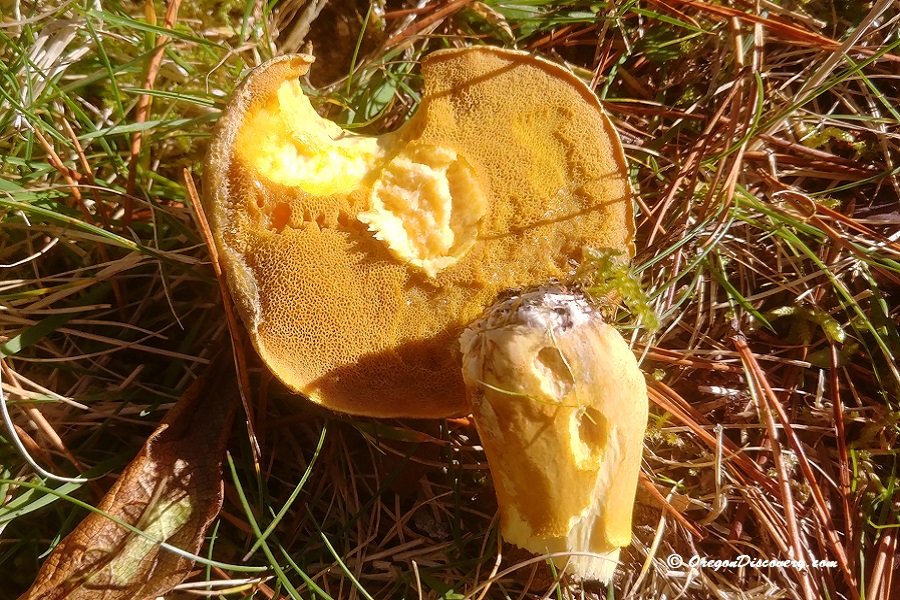
You May Also Enjoy
Disclaimer
This is not an official guide to wild mushroom foraging. Please, do your own research, be sure to practice with a mushroom expert before you pick up and consume any wild mushrooms. Before you start wild mushroom harvesting, learn to accurately identify poisonous mushrooms as well. All wild edible mushrooms must be thoroughly cooked. Make sure that you are not allergic to a new mushroom by trying a small amount before eating more.

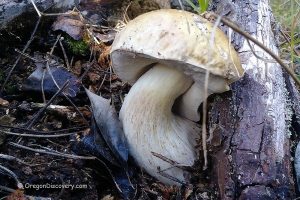
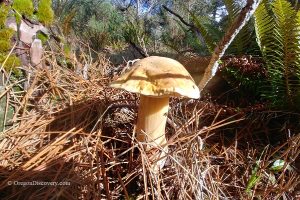

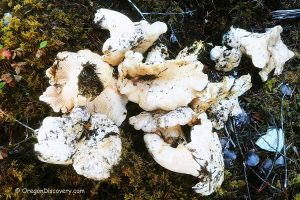
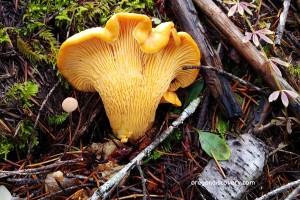


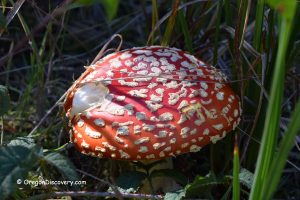
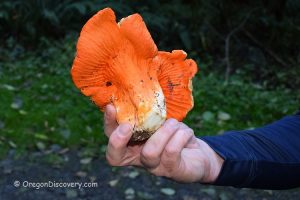

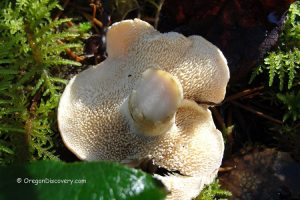
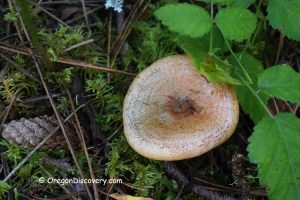
I can’t see the underside of the caps in the bottom left corner picture at the top of the page, in the group of 4.
However, I think that you’ve mistakenly included a picture of Gomphidius oregonensis there.
While edible and not terrible eating, I don’t think they would be included with Suillus since they’re a gilled mushroom.